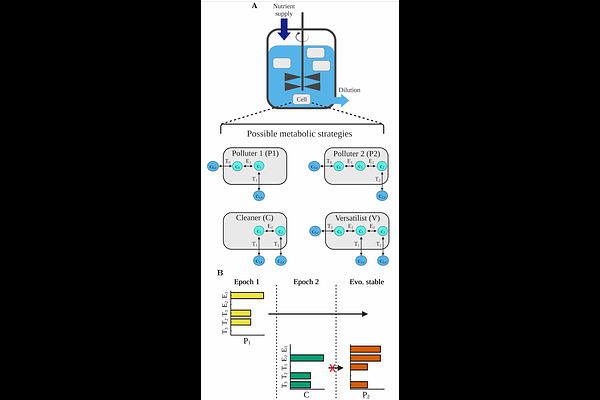When is microbial cross-feeding evolutionarily stable?

When is microbial cross-feeding evolutionarily stable?
Lopez, J. A.; Liu, B.; Li, Z.; Donia, M. S.; Wingreen, N. S.
AbstractCross-feeding, a phenomenon in which organisms share metabolites, is frequently observed in microbial communities across the natural world. One of the most common forms is waste-product cross-feeding, a unidirectional interaction in which the waste products of one microbe support the growth of another. Despite its ubiquity, it is not well-understood why waste-product cross-feeding persists when a single organism could in principle perform both the producer and consumer role. To address this question, we first analyze cross-feeding evolution in a minimal model of microbial metabolism. The model describes multi-step extraction of energy from a substrate in a simple but thermodynamically correct formulation. Surprisingly, we find that cross-feeding is never evolutionarily stable in this model. By analyzing models with more complex growth functions, we identify a novel mechanism for the evolutionary stability of waste-product cross-feeding, namely, generalized intracellular metabolite toxicity. Such toxicity arises because, in excess, the same intracellular metabolites that cells require for metabolism can be detrimental to growth (e.g., due to osmotic stress). We show that some but not all forms of such toxicity can lead to evolutionarily stable consortia of microbes that cross-feed waste products. This stability results from the potential of such consortia to divide the burden of toxic metabolites among a larger population, allowing them to perform their collective metabolism more efficiently than non-cross-feeders. More generally, we predict that growth penalties that scale nonlinearly with intracellular metabolite levels promote cross-feeding. We find that this mechanism for cross-feeding evolutionary stability implies nontrivial population dynamics, such as a discontinuity in population biomass at the onset of cross-feeding.